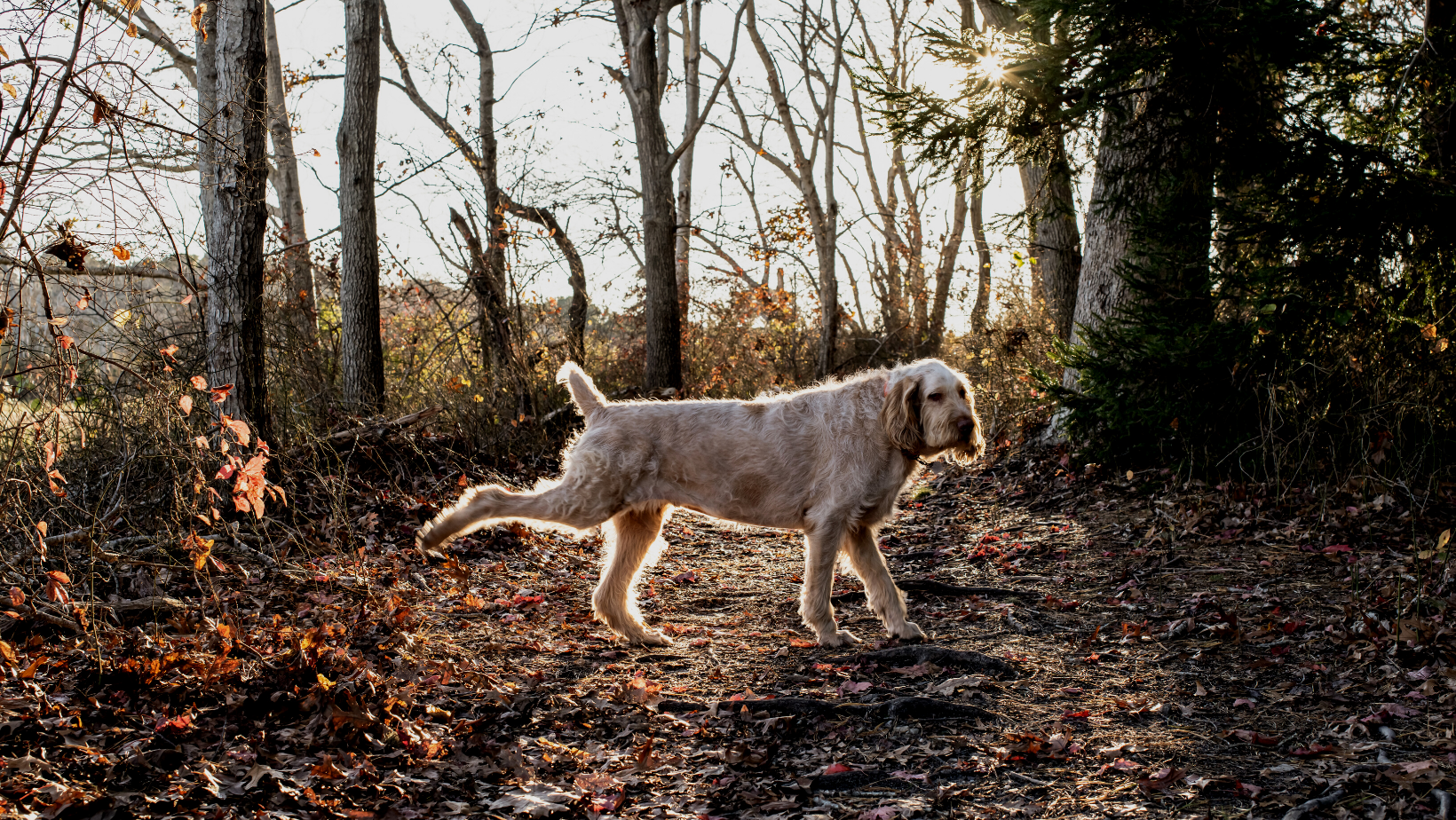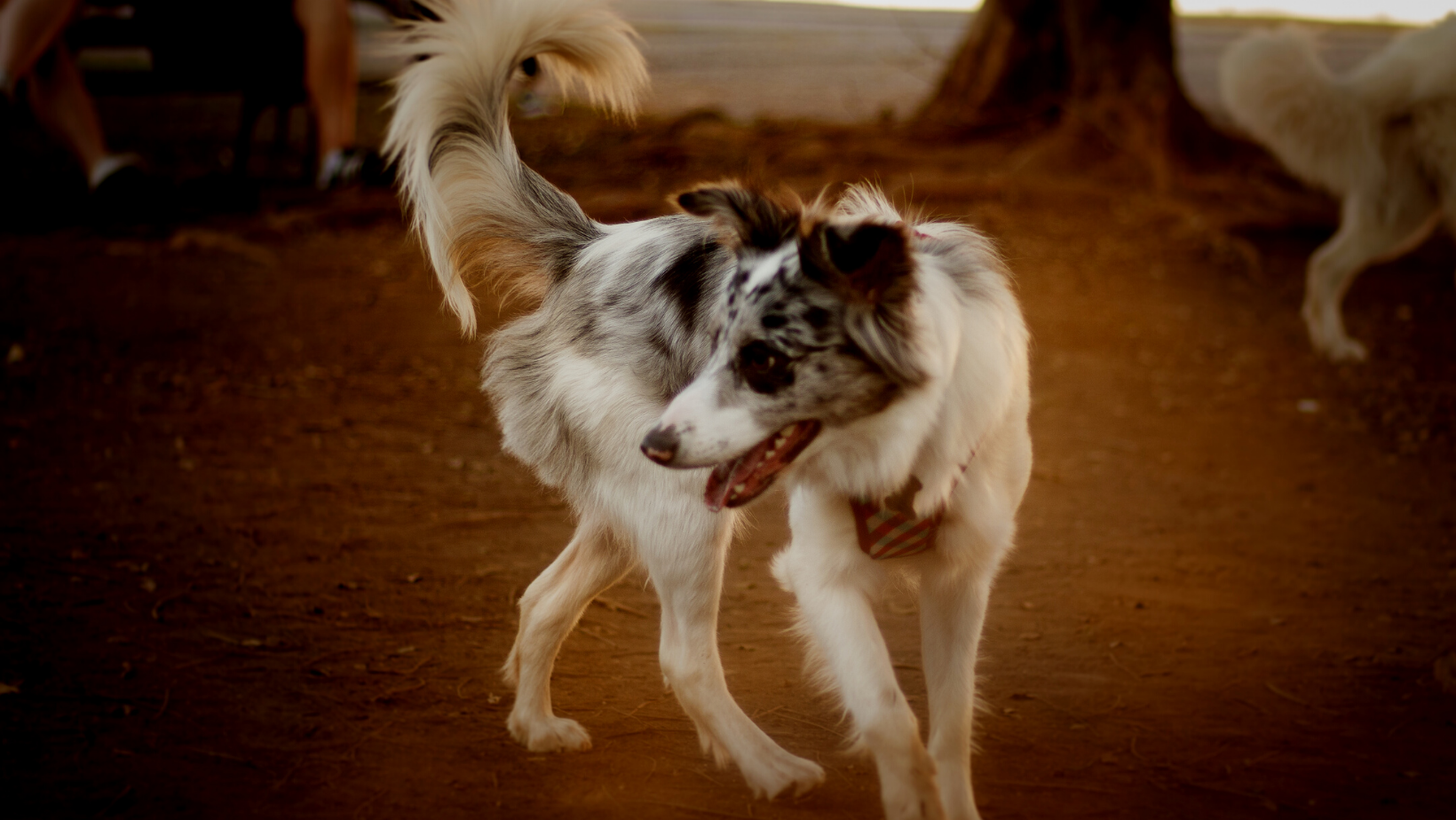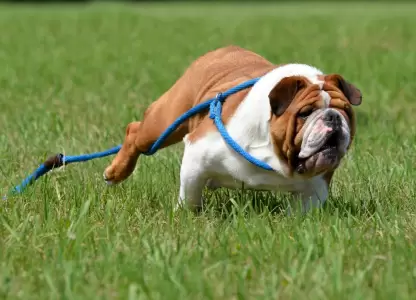Dogs have funny ways of communicating their concerns. You would have casually witnessed them exploring their surroundings with their mouth. And it is not a surprise to find them kicking their legs backward.
The apparent reason could be that they are trying to explore their surroundings to look for something around them. However, more reasons can be explained for why dogs kick their back legs randomly.
Some primary reasons to make your dog kick their back legs include skin infection, bacterial infection, and yeast infection. But such infections can impact your dog’s behavior only temporarily.
If you notice that, they continue kicking their back legs. In that case, you can look at other options to determine their behavior’s primary reason.
Now let us explore all the reasons why they can do that and how to stop them from constantly and randomly kicking their back legs.
Each dog is unique and so are their concerns, which is why the below-mentioned reasons are the most expected possibilities.
Why Does My Dog Kick His Back Legs Randomly?

It can start as a habit they must have gained from somewhere, but now you find them doing this all the time can be concerning.
Scuffing or kicking is seen to be a common practice amongst dogs. Yet, suppose they usually behave otherwise and show no severe signs of concern. In that case, there is no need to worry about it.
1. Muscle Spasm
Times this behavior could be attributed to a physical ailment where dogs may experience uncontrollable rhythmic spasms.
There are many ways in which seizures can manifest themselves, some of them being – your dog losing consciousness, having uncontrollable muscle contractions, or losing their ability to urinate and feces.
This condition can get severe, and your dog may suffer from brain damage because of a rise in body temperature.
- When this happens, get medical help:- Several other reasons can impact your dog’s health and lead to muscle spasms. Infections, recent injury, rheumatoid, and arthritis could be the main reasons. Suppose your dog is not suffering from any of the above. In that case, it might be experiencing muscle spasms because of overexertion, neurological impairment, or physical harm.
- Worrying about their behavior? It is preferable to seek expert assistance:- Your dog’s vet would run some tests to single out any medical condition.
2. Active REM Cycles
Some dogs experience active REM cycles during sleep, which can cause limb jerks and muscle spasms.
Suppose you know of some human beings who talk during their sleep. In that case, you can relate their situation to your dog, which can be found breathing rapidly or making grunting and groaning sounds.
During REM sleep, your dog’s brain maintains the same activity level during sleep that it maintained when he was awake.
3. Excitement
It is valid for hyperactive pets with lots of energy in them, and no amount of physical activity can drain them. This kind of dog likes to channel its energies into engaging in mindless activities like kicking its legs.
When they kick their back legs, it may appear weird to the watchers, who would be left in amazement as to what they are doing, but someone who has witnessed their dog gets all excited would eventually understand.
You’d often find them unsettled or wagging their tail. This may signify excitement, but it might sometimes mean something beyond that. Jumping and panting could follow this behavior, in which case, kicking their back legs would not feel or seem like an act out of place.
4. Territorial Reasons
Have you ever noticed that your dog pushes his rear legs against the ground after answering nature’s call? Some people claim it is an attempt on their end to hide their excrement or urine.
According to some other experts, this may not be entirely true.
Dogs have an innate sense of smell and leave behind by kicking their back legs. They do this to mark their territory, and while some dogs use it to warn others of their presence, others do it to show that they pose no threat.
How to Treat Your Dog If It is Kicking Its Legs Back?

All the above reasons can be easily treated at home if appropriately monitored under professional guidance.
We can deal with most of these cases at home by giving attention to your dog and providing proper training. However, other medical conditions require medical care at the right time.
You can also mention any current medications your dog may take or any injuries they may have recently sustained. Petit mal seizures may not need to be treated if the dog does not seem bothered by them, as they may not pose a severe health risk.
Despite this, you should still consult your veterinarian because it might show a more severe problem, such as a slipped disc, pinched nerve, or injury to a muscle. With painkillers, your dog’s veterinarian can cure muscle spasms brought on by arthritis.
If the condition is severe, your pet can require physical treatment such as massages and other types and surgery to cut out the injured nerves.
Your veterinarian likely can not get your pet to sleep in the doctor’s office. Therefore, it’s helpful to write any observations or details of the event if the issue arises while your pet is sleeping.
The degenerative joint disease is another issue that physical examinations and the history of the dog’s symptoms must identify.
Treatment options include medicinal (to reduce the progression) or surgical methods according to the disease’s progressive nature (to replace the joint).
Your dog may need to be anesthetized to diagnose and treat patellar locations.
The veterinarian may take an x-ray of the tibia, pelvis, and knee, besides an evaluation for hip dysplasia, to determine the shape of the bones. As a precaution, testing on blood and urine will be performed before anesthesia.
Possible Solutions For Keeping Your Dog’s Legs From Kicking Back

Keeping your dog well-hydrated and not overexercised is the easiest way to prevent muscle spasms from excessive exercise. Help them warm up and cool down like you would if you were exercising vigorously before and after.
However, ensure that they never go without physical activity for more than a few days. This ensures that their limbs do not go without movement, as inactivity can cause trouble.
Those few days are also exceptional and are valid only in a medical condition.
While preventing arthritis and degenerative joint disease can be challenging, if detected early, these can be treated with medication and procedures suggested by your veterinarian.
Please keep your dog active, but prevent them from jumping off things or engaging in other behaviors that could hurt them.
Offer your dog plenty of water and attempt to gently massage the affected area if you observe them having muscle spasms. Therapy using heat and cold can frequently ease discomfort.
Try feeding your pet a supportive diet and strengthening their muscular systems without overdoing it to prevent them from happening again.
As an owner, you may do several things to solve or ease the problem for dogs who have trouble falling asleep and encounter issues with their REM cycle. Ensure that they have a proper sleep cycle.
Apart from that, you can arrange for a crate to enable them a personal space which they can retire to when unwell or tired. This will allow them a comfortable and sound sleep.
Also Read: 8 Dog Food Brands To Avoid [+ 5 You Should Buy]
Final Verdict
If you find your dog is not suffering from any severe medical condition and that their habit of kicking their back legs is not harming anyone, you need to relax!
You cannot control many things, so it is best to let them be. However, you can slowly introduce specific changes that can change their behavior for the better. Try not to force new habits on them suddenly.
It is best if new habits or ways become a part of their daily routine and they find them comforting.
Meet John Patterson, an accomplished Dog Trainer and a dedicated advocate for building strong human-canine relationships.With years of experience as a Professional Dog Trainer, John firmly believes that well-trained dogs are a reflection of patient guidance and unwavering care. Beyond his training skills, he finds solace in grooming and playing with dogs, nurturing their physical and emotional well-being.

